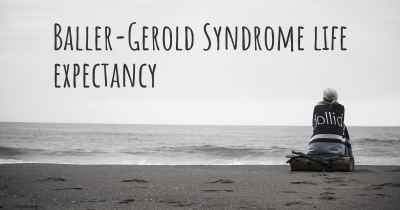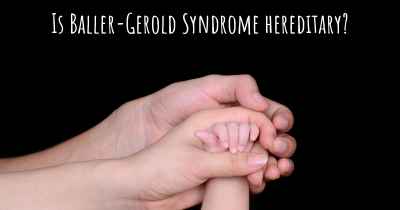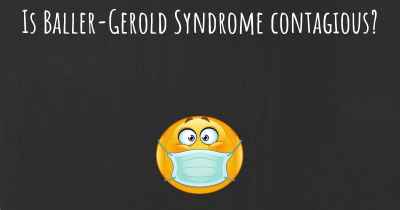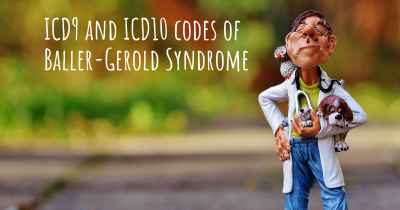Living with Baller-Gerold Syndrome. How to live with Baller-Gerold Syndrome?
Can you be happy living with Baller-Gerold Syndrome? What do you have to do to be happy with Baller-Gerold Syndrome? Living with Baller-Gerold Syndrome can be difficult, but you have to fight to try to be happy. Have a look at things that other people have done to be happy with Baller-Gerold Syndrome
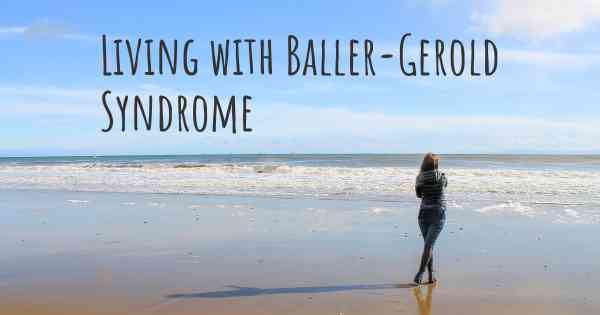
Living with Baller-Gerold Syndrome
Baller-Gerold Syndrome is a rare genetic disorder characterized by a combination of craniosynostosis (premature fusion of the skull bones) and radial aplasia/hypoplasia (underdevelopment or absence of the radius bone in the forearm). Living with Baller-Gerold Syndrome can present unique challenges, but with proper care and support, individuals with this condition can lead fulfilling lives.
Medical Management
Medical management is crucial for individuals with Baller-Gerold Syndrome. Regular visits to a team of healthcare professionals, including geneticists, orthopedic surgeons, and craniofacial specialists, are essential. They can monitor the progression of the condition, provide necessary treatments, and offer guidance on managing associated health issues.
Orthopedic Care
Orthopedic care plays a significant role in managing Baller-Gerold Syndrome. Individuals with radial aplasia/hypoplasia may require interventions such as splinting, bracing, or surgical procedures to improve hand function and mobility. Occupational and physical therapy can also be beneficial in maximizing independence and enhancing quality of life.
Craniofacial Support
Craniofacial support is essential for individuals with craniosynostosis. Early intervention through cranial vault remodeling surgery can help correct abnormal skull shape and prevent potential complications. Ongoing monitoring and follow-up care are necessary to address any additional craniofacial issues that may arise.
Developmental Support
Developmental support is crucial for individuals with Baller-Gerold Syndrome. Early intervention programs, including speech therapy, physical therapy, and occupational therapy, can aid in achieving developmental milestones and improving overall functioning. Educational support tailored to individual needs is also important to ensure academic success.
Psychological and Emotional Well-being
Living with Baller-Gerold Syndrome can sometimes lead to psychological and emotional challenges. It is important to prioritize psychological and emotional well-being. Seeking support from mental health professionals, joining support groups, and connecting with others facing similar challenges can provide valuable emotional support and coping strategies.
Adaptive Equipment and Assistive Technology
Adaptive equipment and assistive technology can greatly enhance independence and improve daily functioning for individuals with Baller-Gerold Syndrome. This may include specialized tools, prosthetic devices, or modifications to the living environment to accommodate specific needs.
Regular Health Monitoring
Regular health monitoring is essential for individuals with Baller-Gerold Syndrome. This includes routine check-ups, screenings, and assessments to detect and manage any associated health conditions. Staying proactive and maintaining open communication with healthcare providers is crucial for overall well-being.
Social Support and Inclusion
Social support and inclusion are vital for individuals with Baller-Gerold Syndrome. Building a strong support network of family, friends, and community can provide emotional support, reduce feelings of isolation, and promote a sense of belonging. Encouraging inclusive environments and advocating for accessibility can help create a more inclusive society for everyone.
Education and Awareness
Education and awareness about Baller-Gerold Syndrome are essential for both individuals with the condition and the wider community. By promoting understanding and acceptance, we can foster a more inclusive society that supports and empowers individuals with Baller-Gerold Syndrome to live their lives to the fullest.
Living with Baller-Gerold Syndrome may present challenges, but with proper medical care, support systems, and a positive mindset, individuals can overcome obstacles and lead fulfilling lives. Remember, each person's journey is unique, and it is important to consult with healthcare professionals for personalized guidance and support.
